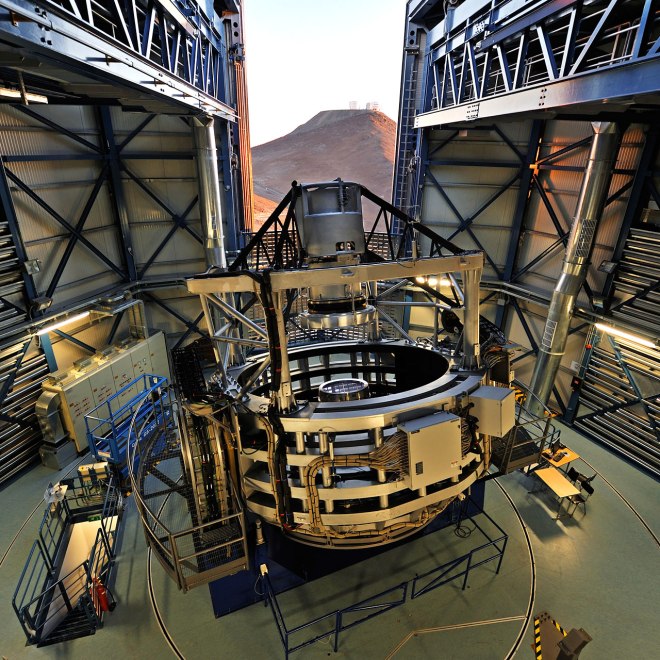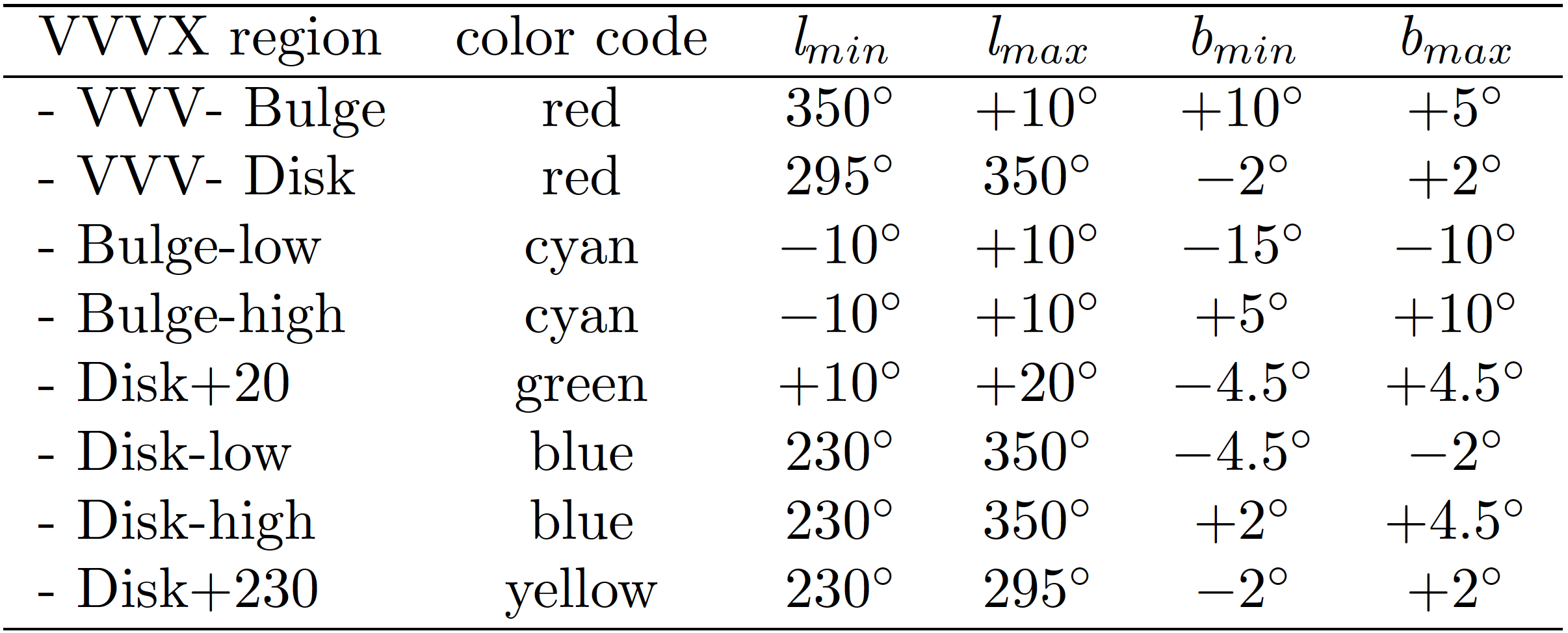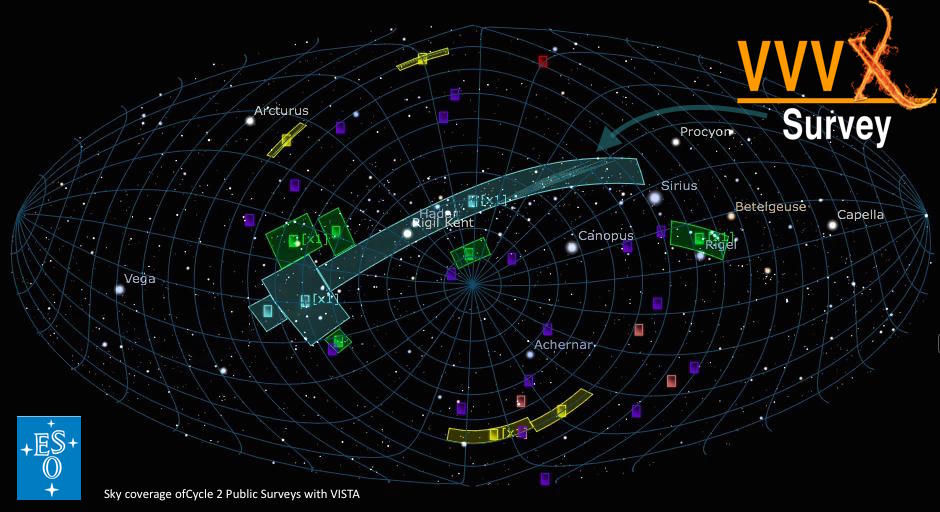What is the structure of the inner Galactic bulge?
How did the Milky Way form?
Thanks to VISTA, a 4.1 meter telescope, and its superb near-infrared camera VIRCAM, new observations can be done to help astronomers answer these questions.
Even when the Milky Way can be observed by the naked eye from dark places at night, because of our position in the Galaxy, we can actually only see our closest neighborhood. Dust, gas, and stars block the light from other places of our galaxy and thus we are not able to observe far into the bulge, at least in the “visual” part of the electromagnetic spectrum.
VISTA, the Visible and Infrared Survey Telescope for Astronomy, is optimized to detect the near-infrared emission of stars, which can travel further through the dust. This fact, along with its privileged site on the Southern Hemisphere, will allow us to map the Bulge with improved detail and perspective.
Previously, all-sky 2 dimensional maps in near-infrared wavelengths have been done with single epoch data. Otherwise, multi-epoch observations have been carried out for specific small field of view targets on the bulge and disk. The VISTA Variables in The Via Lactea (VVV) public survey will perform wide FOV multi-epoch observations of the Galaxy’s bulge and part of the disk, providing the astronomical public community with a high resolution 3-D (or 4-D if you include the time dimension) map of the bulge.

An ESO Public Survey
Vista Variables in the Via Lactea (VVV) is a public IR variability survey of the Milky Way bulge and an adjacent section of the mid-plane where star formation activity is high.
It will take 1929 hours, covering ~109 point sources within an area of 520 sq deg, including 33 known globular clusters and ~350 open clusters. The final products will be a deep IR atlas in 5 passbands and a catalogue of ~106 variable point sources. These will produce a 3-D map of the surveyed region (unlike single-epoch surveys that only give 2-D maps) using well-understood primary distance indicators such as RR Lyrae stars. It will yield important information on the ages of the populations.
The observations will be combined with data from MACHO, OGLE, EROS, VST, SPITZER, HST, CHANDRA, INTEGRAL, and ALMA for a complete understanding of the variable sources in the inner Milky Way. Several important implications for the history of the Milky Way, for globular cluster evolution, for the population census of the bulge and center, and for pulsation theory would follow from this survey.
The VVV Science Team made it through the Second Cycle of VISTA Surveys (7 programmes)
Sky coverage of Cycle 2 Public Surveys with VISTA: the colour coded footprints of their targeted areas are shown in the figure below. Light blue- VVVX, Green-VISIONS, Yellow-SHARKS, Violet-GCAV, Light red-VEILS, Red-UltraVISTA. VINROUGE does not have pointings in this figure as they will be set by Gravitational Wave triggers as they occur.
VVVX
The VVV eXtended ESO Public Survey
For the past 6 years, the ESO Public Survey VISTA Variables in the Via Lactea (VVV) has been mapping the IR variability of the Milky Way bulge and southern mid-plane. This public survey project proposes an extension of the previous VVV survey to enhance its long lasting legacy. The proposed VVV eXtended Survey (VVVX) will cover the gaps left between the VVV and VHS areas and extend the VVV time-baseline enabling proper motion measurements of -1 in the optically obscured regions where GAIA is limited by extinction. VVVX will take 2000 hr, and cover 1700 sq. degrees in the Southern sky, from l <=230 deg to l = +20 deg. Within the existing VVV area we will produce a 5-D map of the surveyed region by combining positions, distances and proper motions of well-understood distance indicators such as red clump stars, RR Lyrae and Cepheid variables in order to unveil the inner structure of the Milky Way. The VVV+VVVX catalogues will complement those from the GAIA space mission with very red sources and will feed spectroscopic targets for the forthcoming ESO high-multiplex spectrographs MOONS and 4MOST.

VVVX Tile IDs · LB · RaDec

